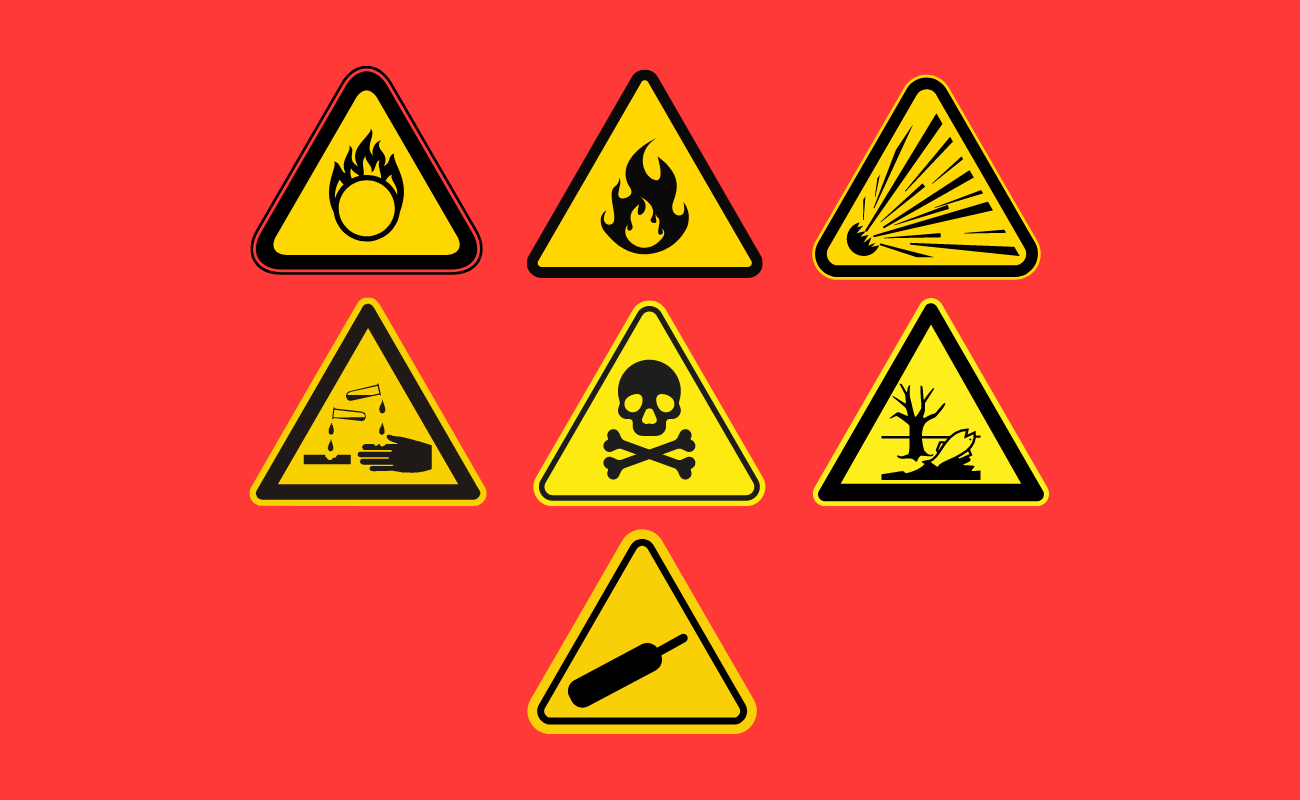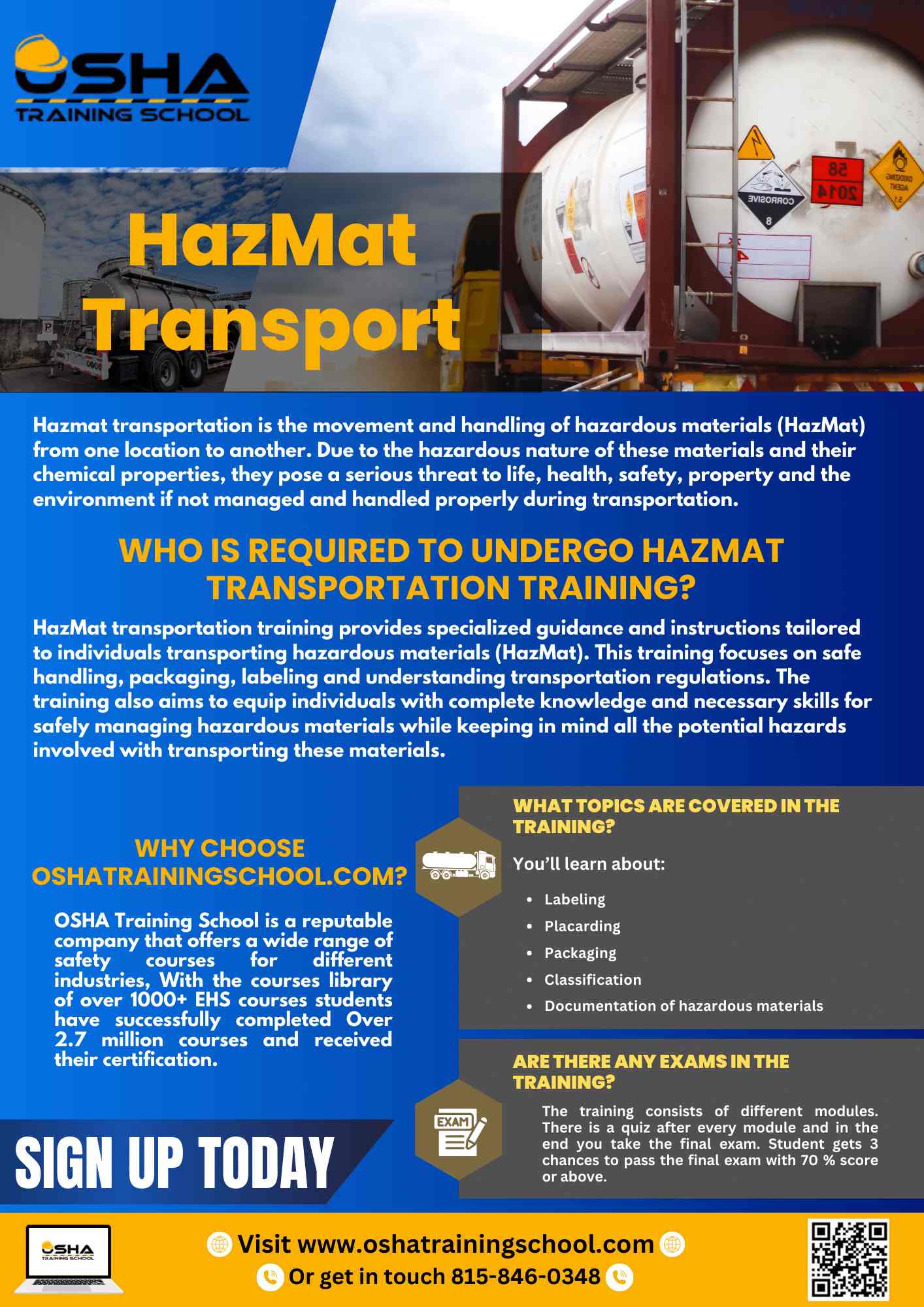
Clean Air Act: History, Standards & Safety
The Clean Air Act (CAA) is a federal law that regulates air emissions from both stationary (industrial) and mobile sources throughout...


Transporting hazardous materials is a critical and necessary activity in our modern world. From chemicals and radioactive materials to flammable liquids and toxic substances, hazardous materials play vital roles in various industries. However, the transportation of these materials presents significant challenges and potential risks. To ensure the safety of lives, the environment, and infrastructure, it is imperative to prioritize safe hazardous material transportation practices.
Hazardous materials encompass a wide range of substances that pose risks to human health, property, and the environment. These materials can be solids, liquids, or gases and may exhibit characteristics such as toxicity, flammability, reactivity, or radioactivity. Common examples include industrial chemicals, petroleum products, medical waste, and even certain consumer goods.

Safe transportation of hazardous materials is crucial for several reasons:
1. Public Safety: The primary concern in hazardous material transportation is protecting the public from potential harm. Accidents or spills during transit can lead to immediate health hazards, injuries, or even fatalities. By adhering to rigorous safety protocols, transportation companies minimize the risk of accidents and ensure public safety.
2. Environmental Protection: Hazardous material spills can have severe environmental consequences, contaminating soil, water bodies, and the air we breathe. Toxic substances can pollute ecosystems, harm wildlife, and have long-lasting ecological impacts. Employing safe transportation practices reduces the likelihood of environmental disasters and preserves our natural resources.
3. Infrastructure Preservation: Improper handling or accidents involving hazardous materials can cause significant damage to infrastructure. Explosions, fires, or leaks can lead to structural failures, road closures, and disruptions to utilities. Safeguarding transportation infrastructure benefits not only the industry but also the general public who rely on efficient transportation systems.
To ensure the safe transportation of hazardous materials, several key practices must be followed:
1. Regulatory Compliance: Governments worldwide have established strict regulations and standards for the transportation of hazardous materials. These regulations address packaging requirements, labeling, placarding, documentation, driver training, and emergency response protocols. Compliance with these regulations is essential to mitigate risks and maintain safety.
2. Proper Packaging and Labeling: Hazardous materials must be packaged appropriately using approved containers and materials. Adequate labeling and placarding provide essential information to emergency responders, ensuring they can take appropriate actions in the event of an accident or spill.
3. Adequate Training: Transporting hazardous materials requires specialized knowledge and training. Drivers, handlers, and personnel involved in the transportation process should receive comprehensive training on handling, storage, and emergency response procedures. Regular training sessions help reinforce safety practices and promote awareness of potential risks.
4. Risk Assessment and Planning: Before transporting hazardous materials, thorough risk assessments should be conducted to identify potential hazards along the transportation route. This enables proactive measures to be implemented, such as selecting suitable routes, considering weather conditions, and coordinating with local authorities for emergency preparedness.
5. Emergency Response Preparedness: Despite best efforts, accidents can still occur during hazardous material transportation. It is vital to have well-defined emergency response plans in place, including communication protocols, evacuation procedures, and access to appropriate personal protective equipment (PPE) and spill containment resources.
Safe transportation of hazardous materials is a shared responsibility that demands unwavering commitment from all stakeholders involved. By adhering to stringent regulations, employing proper handling techniques, and prioritizing comprehensive training and emergency preparedness, we can mitigate risks and safeguard lives, the environment, and infrastructure. Continued advancements in transportation safety practices and ongoing collaboration among industry, government, and communities will ensure that hazardous materials can be transported safely, allowing us to benefit from their essential role in our daily lives while minimizing potential harm. For more information please visit our Hazmat Transportation Training page


The Clean Air Act (CAA) is a federal law that regulates air emissions from both stationary (industrial) and mobile sources throughout...

In 2023, private industry employers in the U.S. reported 2.6 million nonfatal workplace injuries and illnesses, down 8.4% from the previous...

The OSHA Training Institute (OTI) is the official training and education arm of the Occupational Safety and Health Administration (OSHA)...

The term “OSHA 40-Hour Certification” is one of the most common misconceptions in workplace safety training. Many...

Every year, thousands of workers are injured or lose their lives in workplace accidents. These incidents highlight...

Workplace safety is regulated at both the federal and state levels. In Virginia, the Virginia State Plan, also known as...